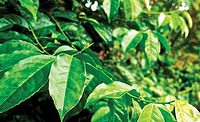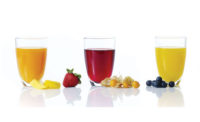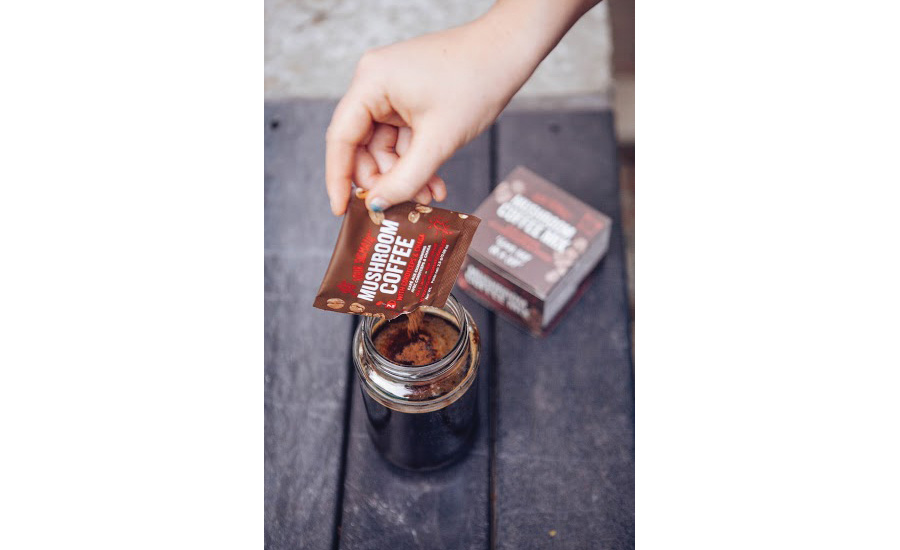Natural ingredients boost energy drink market
Manufacturers turn to amino acids, carbohydrates and much more for sustained energy formulations



Celsius launched two new flavors — Sparkling Watermelon and Sparkling Grape Rush — to its line of liquid dietary supplements that contain green tea extract, guarana seed extract, ginger root, B vitamins and vitamin C, the company says. (Images courtesy of Celsius Holdings Inc.)





Launched in 1989, TV commercials featuring the Energizer Bunny, the sunglass-wearing pink toy rabbit, have entered the vernacular as a representation for anything that endlessly continues. As more consumers strive to “get up and go,” energy drinks also have entered the mainstream, according to ingredient suppliers.
Yet, as the energy drink category continues to expand, beverage manufacturers are dealing with consumer segments with diverse needs, says Catherine Barry, director of marketing for Firestone, Colo.-based National Honey Board.
“Originally, energy drink consumers were just looking for a jolt of energy and a flashy package. They did not care where the energy was coming from,” she says. “Today, more and more consumers are looking for the energy, but wanting that energy from all-natural sources [that] they can feel positive about consuming.”
Although success is possible when chasing trends and developing beverages that cater to the theme of the day, Bill Driessen, director of technical sales for Minneapolis-based Taiyo International Inc., notes that the entire energy drink segment emerged out of a few highly innovative companies that were not chasing trends — they were creating a trend. “Out of those early pioneers evolved the energy drink segment,” he says.
According to Los Angeles-based IBISWorld’s May 2015 report titled “Energy Drink Production in the US,” 67 percent of the U.S. population is concerned about having enough energy to get through the day, which, in turn, is fueling double-digit growth in the energy drinks segment during the past five years. Additionally, with $8 billion in revenue, the category outperformed most other packaged beverage production industries, it adds.
Ingredient suppliers note that today’s on-the-go culture and the “snackification” of meals means that consumers expect their products to do more for them. “Adding energy to products makes them more functional and combines consumers’ needs into more convenient offerings,” says Claire Meier, e-marketing coordinator for Prinova USA, Carol Stream, Ill.
Tina Rzeha, marketing associate of beverage flavors at Hoffman Estates, Ill.-based Sensient Flavors, echoes similar sentiments. “Consumers are no longer just looking for the traditional energy-boosting beverage that will give them their wanted lift,” she says. “Millennials and the I-generation prefer beverages with functionality. It is much more attractive to them to consume a beverage that is already part of their daily diet instead of incorporating another drink with the sole purpose of getting a boost.
“We’re seeing a boom in fusion style teas and functional waters with energy ingredients,” she continues. “Another product category that is on the rise are dairy-based energy drinks. Consumers who are looking for a combination of protein and energy are able to incorporate them in the morning, before their work-out or on the go.”
Although caffeine is the leading energy ingredient, Taiyo’s Assistant General Manager T.P. Rao notes that several other energy-boosting ingredients routinely are added to energy drinks and shots. Among the options for beverage-makers to choose are ginseng, guarana, yerba mate, glucuronolactone, La-carnitine, phenylanine, citicoline, creatine, malic acid, B vitamins, L-theanine, tyrosine, taurine, inositol, quercetin and milk thistle.
Whether synthetic or from natural sources, caffeine is ubiquitous within the energy beverage segment, according to the company. “No other ingredient has been found that gives consumers the same kind of alert feeling and boost of energy as caffeine,” Driessen says. “Furthermore, caffeine’s health effects (side effects) have been thoroughly researched on all cross sections of our society.”
Yet, Driessen notes that the boost of energy also comes with unwanted side effects, including jitters, nervousness, rapid heartbeat and/or inability to focus one’s thoughts. “Suntheanine is a unique ingredient that tends to reduce or remove those negative effects of caffeine, while still allowing people to enjoy the positive effects of caffeine — being alert and energized,” he says.
Rao adds that L-theanine, an amino acid found in tea leaves, has been proven effective for relaxing and refreshing mood and focus, is effective in reducing the side effects associated with caffeine.
“The combination of L-theanine with caffeine … provides true energy for sustained refreshed mood, focus, concentration and diminishes the physical fatigue and negatives of caffeine — ‘the true energy,’” he says.
Heather Young, beverage development consultant for Greensboro, N.C.-based Mother Murphy’s Laboratories Inc., adds that the stigma associated with energy drinks sometimes give them a negative connotation as being harmful to one’s health. Yet, natural energy ingredients could change that association. “Some consumers shy away from beverages containing energy components,” she says. “[But] we’re seeing a lot of energy components in the beverage industry changing over from traditional caffeine to more natural energy sources [using] green tea extract, B vitamins and vitamin C,” she notes.
Bee energetic
In response to consumer demand, beverage formulators are using more natural ingredients, like guarana, honey, green tea and coffee bean extracts, in energy drinks. For example, honey contains 17 grams of carbohydrates in each tablespoon and is an all-natural sweetener, the National Honey Board’s Barry says. It also retains a clean label and delivers a needed energy boost, she adds.
“Honey gives beverages a pure boost of energy craved by endurance athletes and label readers alike,” she says. “It has become a major source of all-natural energy in the endurance food and beverage categories, appearing in everything from gels to bars to drinks.”
Several energy drinks containing honey have hit the market. Vacaville, Calif.-based Bee Energy released its Bee Energy Green Tea which is made with honey and combined with natural caffeine. RevHoney’s natural energy drink, Apple Honey Sports Drink, is produced by a fourth generation family of beekeepers. Each 12-ounce bottle contains one-and-a-half tablespoons of honey.
Miami, Fla.-based EnerBee is an organic energy lemon green tea designed to give consumers energy without the crash and burn of traditional energy drinks, the company says. The 80-calorie drink is infused with 100 milligrams of organic caffeine, ginseng and yerba mate it adds.
Beyond honey, other natural ingredients have found a home within the energy drinks market. Prinova’s Meier notes that infusing drinks with amino acids is gaining in popularity.
“Using amino acids for energy started out in sports nutrition, where they were used in pre-workout beverages, but their use is becoming more mainstream as consumers look for natural ways to increase their energy throughout the day,” she says. “As products become more functional, an easy way to add energy without the drawbacks of caffeine is to use amino acids.”
However, when it comes to taste, incorporating energy-boosting ingredients like caffeine and amino acids in beverages has its drawbacks, Meier says. “Caffeine and amino acids both have a very strong, bitter taste,” she says. “Masking … to make a beverage palatable is a difficult task. Prinova’s Application Lab excels in beverage formulations thanks in large part to our Bitter Blocker.
“We’ve reformulated our Bitter Blocker … and have perfected the usage rate with our flavors to create the best possible tasting beverages,” she continues. “The Bitter Blocker, as its names implies, helps block out the bitterness inherent in energy ingredients.”
Louisville, Ky.-based Flavorman Lab Manager Kristen Wemer says consumers are turning to more natural energy-boosting vitamins, herbs, teas and coffees, as well as nootropic components and dopamine-promoting beverages.
Yet, the herbs come with tastes and colors of their own that need to be masked or embraced, she notes. “MCT oil is not very water soluble,” she says. “Natural ingredients are more expensive than their synthetic counterparts, and more research needs to be done on nootropic drinks to determine their true effects.”
Product differentiation
Knowing the functionality that a beverage-maker is targeting also can be crucial. Energy drinks are largely divided into two categories: mental and physical performance, Taiyo’s Rao notes.
“The former focuses on the improvement of mood, reduction of mental fatigue, increased concentration and focus, [while] the latter focuses on increasing physical endurance and vitality,” he says. “So, beverage-makers are mostly utilizing a combination of energy ingredients based on [whether they are] positioning their beverages into mental or physical performance or both.”
In keeping with the demand for beverages with multiple benefits, New York-based Kyowa Hakko USA says that its Cognizin citicoline is a brain-health ingredient that supports attention, focus and brain energy.
Mental energy is a trend that is particularly in demand with the younger generation, those living in big cities with bold social lives and high-profile jobs, Kyowa Hakko’s Marketing Manager Elyse Lovett notes.
“Beverage-makers are utilizing Cognizin citicoline as a functional ingredient. Some are combining ingredients for mental energy as well as whole body energy,” Lovett says. Additionally, Cognizin citicoline has been studied in healthy adults and adolescents, has GRAS status and is soluble, she says.
Carbohydrates also are essential for optimum energy performance because they provide glucose, decisive energy for the body and brain, according to Beneo Product Manager Katja Reichenback.
Although many popular energy and sports drinks contain high glycemic carbohydrates, like maltodextrin, glucose syrup and sucrose, the ingredients’ downside can result in large spikes and drops in blood glucose levels, which are not ideal for athletes and active people looking for maximum endurance, she states.
The Morris Plains, N.J.-based company manufactures a functional carbohydrate, Palatinose, a sugar that delivers a balanced release of energy over a longer period of time. “Looking at the science, the relative importance of carbohydrate and fat oxidation to fuel active muscles during exercise and the influence of additional carbohydrate intake needs to be considered,” Reichenback explains. “First, carbohydrates consumed … are used first in the energy supply to the muscle because this allows the body to save its own carbohydrate and fat reserves for times when no external sources are available.
“Second, the rate of glucose supply from those drinks determines the extent to which mobilization and utilization of internal sources are suppressed,” she continues. “… Palatinose works because it provides carbohydrate energy more steadily over a longer time.”
Relatively new on the healthy energy ingredient scene is the use of the superfood mushroom in beverages. Los Angeles-based Four Sigmatic offers four mushroom-based cocoa and coffee mixes, including Chaga, Reishi, Lion’s Mane and Cordyceps, which provide energy without the jitters and can reduce stress, build immunity, promote gut health and boost brain power, it adds.
Re-engaging energy
Experts note that today’s beverage-makers should differentiate their energy drinks and go beyond defining energy as a caffeinated buzz from sugar and caffeine. “As has been the case for some time, the real innovators in the energy segment have to consider the quality of the energy experience that consumers receive,” Taiyo’s Driessen says.
With the energy drink market reaching maturity, innovators and entrepreneurs are looking to redefine the category by developing additional segmentation, he says. For example, calm, relaxed and focused beverages without caffeine; natural energy and furthering the use of natural and herbal ingredients; sports energy by adding protein, electrolytes or vitamins to help athletes perform and focus; and sugar-free/low-calorie energy, for those trying to reduce sugar intake and glycemic index.
These trends, as well as natural and organic and health and wellness, also are influencing how major beverage manufacturers are approaching their new product formulations.
“We’re seeing big name brands reformulating their products to make them ‘natural’ or even organic or they are simply adding new product lines to their already existing repertoire,” Sensient Flavors’ Rzeha says. “Some of the up-and-coming flavors in the energy drink market are botanicals … [which contain] less sweetness, less artificial flavors and have an everyday appeal to [them]. Nowadays, consumers who are looking for an energy boost don’t necessarily want to sacrifice their health and are more conscious of clean labels and ingredients. That is a trend that will continue.”
Looking for a reprint of this article?
From high-res PDFs to custom plaques, order your copy today!










